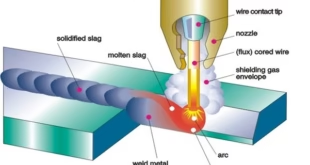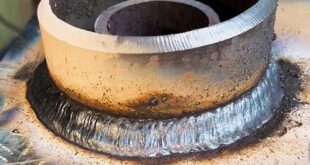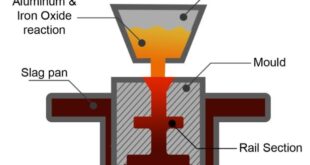Electron Beam Welding Process
Introduction to Electron Beam Welding
Electron Beam Welding (EBW) is a highly sophisticated welding technique that uses a focused beam of high-velocity electrons to fuse materials together. This process is becoming increasingly vital in industries where precision and high-strength welds are paramount, such as aerospace, automotive, and electronics manufacturing. In this article, we’ll explore how EBW works, its advantages and disadvantages, and why it’s an important process in modern manufacturing.
What is Electron Beam Welding?
Electron Beam Welding is a fusion welding process that generates heat through a stream of high-speed electrons. These electrons are accelerated and concentrated into a fine beam that can melt metal surfaces upon impact, creating a strong, precise weld. One of the most critical aspects of EBW is that the welding takes place in a vacuum, ensuring that there is no contamination from atmospheric gases.

Key Components of EBW:
- Electron Gun: This generates the high-speed electrons that form the beam.
- Vacuum Chamber: Ensures the welding process takes place in a contaminant-free environment.
- Power Supply: Powers the electron gun and controls the beam’s intensity.
- Workpiece Manipulator: Moves the workpiece into the correct position for welding.
How Does Electron Beam Welding Work?
The electron beam welding process involves a series of precise steps to ensure accuracy and quality. Here’s how the process unfolds:
- Vacuum Creation: The workpiece is placed in a vacuum chamber to remove atmospheric gases, which could interfere with the electron beam.
- Electron Acceleration: Electrons are generated and accelerated using an electron gun, often to speeds of 30-70% of the speed of light.
- Focus and Control: The electron beam is focused using magnetic lenses to direct it precisely at the weld area.
- Fusion: The high-energy beam penetrates the material, melting it to create the weld. The molten metal quickly solidifies, forming a tight, deep weld with minimal heat-affected zones.
The vacuum environment is critical for EBW as it prevents the scattering of electrons, ensuring the beam’s focus remains sharp and energy-efficient.
Advantages of Electron Beam Welding
Electron Beam Welding offers several key benefits that make it a preferred method in precision welding applications:
High Precision and Accuracy:
The highly focused nature of the electron beam allows for incredibly precise welds. This is especially beneficial for industries where precision is critical, such as aerospace and medical device manufacturing.
Deep Penetration Welding:
EBW can achieve deep weld penetration with minimal heat input. This is ideal for welding thick materials, such as in structural applications, without causing distortion or weakening the surrounding metal.
Low Heat Input Benefits:
The heat-affected zone (HAZ) in EBW is much smaller compared to traditional welding methods. This minimizes the risk of thermal damage, residual stresses, and material distortion.
Disadvantages of Electron Beam Welding
Despite its advantages, EBW does have some limitations:
High Initial Setup Cost:
Electron beam welding machines are expensive, primarily due to the complexity of the equipment and the need for a vacuum chamber.
Vacuum Requirement:
The requirement for a vacuum chamber can limit the size of the workpiece and complicate the welding of very large structures.
Specialized Skill Requirement:
Operating an electron beam welding machine requires specialized training. Not only must the operator understand welding principles, but they must also be proficient in operating and maintaining vacuum systems and electron beam controls.
Applications of Electron Beam Welding
Electron Beam Welding is used in a variety of high-precision industries where the quality of the weld is critical:
Aerospace Industry:
EBW is widely used in the aerospace sector to weld engine components, turbine blades, and other high-stress parts where the integrity of the weld must be impeccable.
Automotive Manufacturing:
In the automotive industry, EBW is used for the production of key components such as transmission parts and gear assemblies.
Medical Devices and Electronics:
The precision of EBW makes it ideal for creating clean, contamination-free welds in medical devices, as well as in microelectronics where small-scale, precise welding is required.
Electron Beam Welding vs. Laser Welding
While both Electron Beam Welding and Laser Welding are high-precision techniques, they have distinct differences:
Energy Source:
EBW uses high-speed electrons, while laser welding uses focused light beams to generate heat.
Vacuum Requirement:
EBW requires a vacuum environment, whereas laser welding can be performed in the atmosphere, making laser welding more flexible in terms of equipment setup.
Power and Depth:
Electron beam welding can achieve deeper welds, especially in thicker materials, while laser welding is often better for surface-level welds.
Challenges in Electron Beam Welding
Despite its many benefits, EBW also comes with some challenges:
Equipment Maintenance:
The sophisticated nature of EBW equipment means that maintenance and repair can be costly and complex. Regular calibration is required to maintain precision.
Material Limitations:
Certain materials, such as those that outgas excessively in a vacuum, are not well-suited for EBW. Additionally, porosity and cracking can occur if parameters are not carefully controlled.
FAQs
What materials can be welded using EBW?
A variety of metals can be welded using EBW, including steel, titanium, aluminum, and nickel-based alloys.
Can EBW be used in non-vacuum environments?
No, EBW requires a vacuum environment to prevent electron scattering and ensure the precision of the weld.
How does EBW compare to traditional welding methods?
EBW offers higher precision, deeper weld penetration, and less distortion compared to traditional methods, but comes at a higher cost and complexity.
What industries benefit the most from EBW?
Industries like aerospace, automotive, medical devices, and electronics benefit the most from the precision and strength of EBW welds.
What is the typical cost of an electron beam welding machine?
The cost of an EBW machine varies, but it typically ranges from $200,000 to over $1 million, depending on the complexity and capabilities of the machine.
Conclusion
Electron Beam Welding is a powerful welding process that combines precision with deep penetration capabilities. While it has some limitations, such as high equipment costs and the requirement for a vacuum environment, its advantages make it indispensable in industries where weld quality and precision are critical. Whether in aerospace, automotive, or medical device manufacturing, EBW continues to be a vital technology in modern production processes.
 Welding of Welders All about Welding and Welders
Welding of Welders All about Welding and Welders



